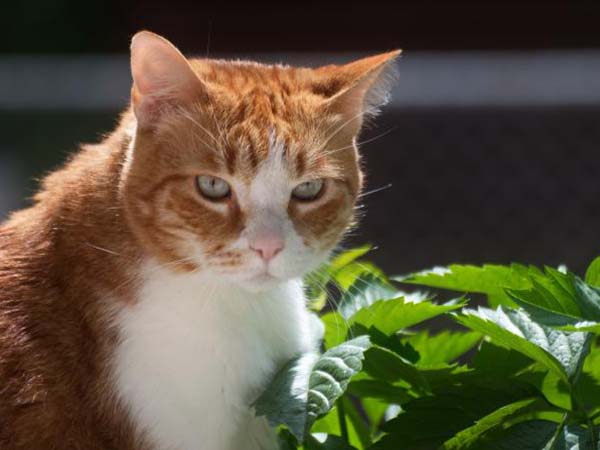Toxic Plants for Cats: Protecting Your Feline Friends
|
Mar 26, 2024 - By the dedicated team of editors and writers at Newsletter Station.

|
Cats are beloved companions, and ensuring their safety and well-being is a top priority for pet owners. One often-overlooked danger in our homes and gardens is toxic plants. Many common houseplants and outdoor shrubs can significantly threaten our feline friends.
In this blog, we'll explore some of the most common poisonous plants for cats and provide tips on how to keep your furry family members safe.
- Lilies
Lilies are among the most notorious toxic plants for cats. Various species of lilies, such as Easter, tiger, and daylilies, can cause severe kidney damage or even be fatal if ingested by cats. Even a tiny nibble of the leaves, petals, or pollen can have dire consequences.
To protect your cat from lilies, it's best to avoid having them in your home altogether. If you must have lilies, make sure they are out of your cat's reach and monitor your pet closely when they are around these flowers.
- Poinsettias
Poinsettias are popular during the holiday season but can be toxic to cats. While they are not as deadly as some other plants, ingestion can cause mild gastrointestinal distress, such as drooling, vomiting, or diarrhea. It's still advisable to keep poinsettias out of your cat's reach or opt for artificial ones to avoid potential issues.
- Aloe Vera
Aloe vera is a common houseplant known for its soothing properties for humans, but it can harm cats. The gel inside the aloe vera leaves contains compounds that can cause gastrointestinal upset, including vomiting and diarrhea, if ingested. Keep aloe vera plants in a location where your cat can't access them.
- Oleander
Oleander is a beautiful but highly toxic outdoor shrub. All parts of the oleander plant contain cardiac glycosides, which can lead to severe heart problems and even death in cats if ingested. Be cautious about planting oleander in your garden, and if it's already present, ensure your cat can't access it.
- Azaleas and Rhododendrons
Azaleas and rhododendrons are popular ornamental plants in gardens. Still, they contain toxins called grayanotoxins that can cause vomiting, diarrhea, drooling, and even more severe symptoms like cardiac arrest if consumed by cats. Ensure your garden is free of these toxic plants, or use barriers to keep your cat away from them.
- Philodendron
Philodendrons are common indoor plants with attractive, heart-shaped leaves. However, they contain calcium oxalate crystals that can cause irritation and swelling in a cat's mouth and throat if chewed. While not typically life-threatening, keeping philodendrons out of your cat's reach is best.
- Marijuana (Cannabis)
With the increasing legalization of marijuana in many places, it's essential to note that cannabis plants and products can be toxic to cats. Ingesting marijuana can lead to various symptoms in cats, including lethargy, incoordination, and even seizures. Be cautious and keep your cannabis products securely stored away from your pets.
As responsible cat owners, we must be aware of the potential dangers lurking in our homes and gardens. Toxic plants can cause various health issues for cats, ranging from mild discomfort to life-threatening conditions.
To keep your feline friends safe, educate yourself about the plants that are harmful to them and take preventive measures to ensure they cannot access these toxic plants. Your vigilant efforts will go a long way in protecting your beloved cats and keeping them healthy and happy.
Unlock the Power of Email Marketing
Harness the potential of email marketing with Newsletter Station. Reach your target audience, drive conversions, and achieve your business goals.
|
More Blogs
| Apr 24, 2024 |
How to Know When It Is Too Hot to Walk Your Dog
|
| Apr 17, 2024 |
What to Do When Your Pet Isn't Eating
|
| Apr 10, 2024 |
What Causes Bad Breath in Dogs and Cats?
|
| Apr 3, 2024 |
What Causes Cysts in Dogs: Understanding Canine Cyst Formation
|
| Mar 26, 2024 |
Toxic Plants for Cats: Protecting Your Feline Friends
|
| Mar 20, 2024 |
Reasons Your Dog Is Licking Its Paws
|
| Mar 13, 2024 |
Ways to Deal with Dog Separation Anxiety
|
| Mar 6, 2024 |
Identifying Food Allergies in Dogs and Cats
|
| Feb 28, 2024 |
Spotting the Early Signs of Dementia in Your Aging Dog
|
| Feb 21, 2024 |
How Safe is Pet Hair Dye?
|
| Feb 14, 2024 |
Why Enrichment is Critical for a Cat or Dog
|
| Feb 7, 2024 |
Unraveling the Mystery: The Causes of a Cough in a Dog or Cat
|
|
|
|